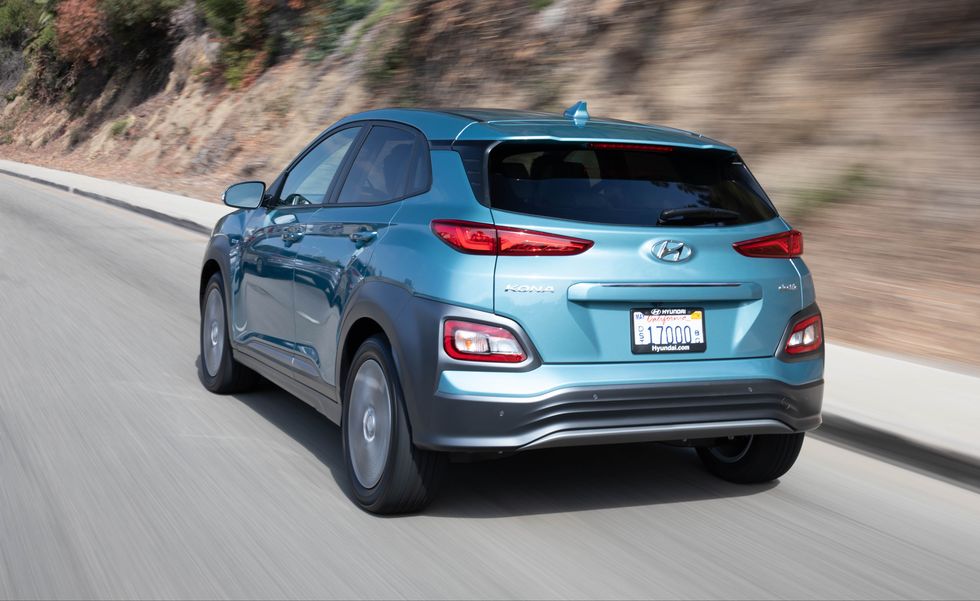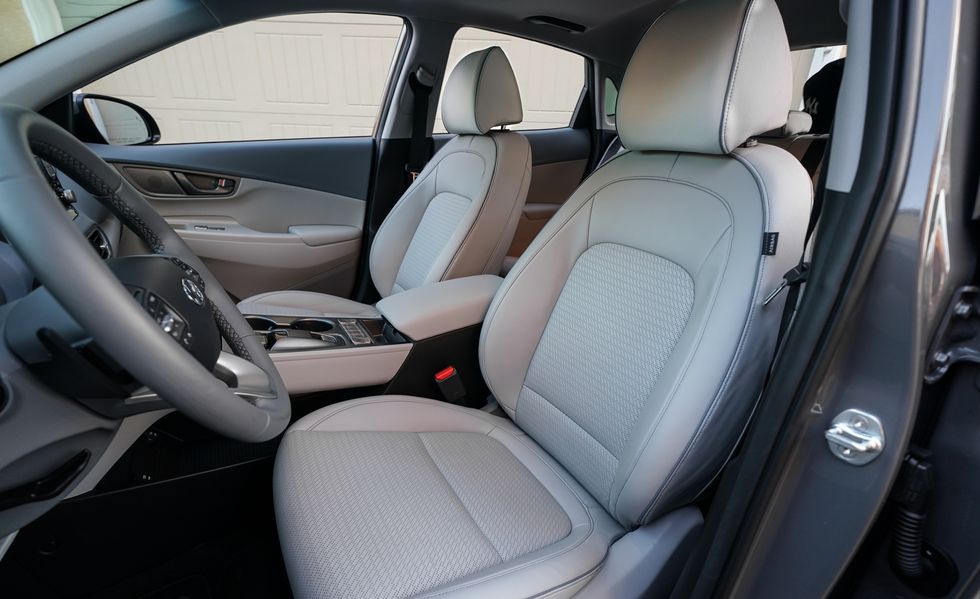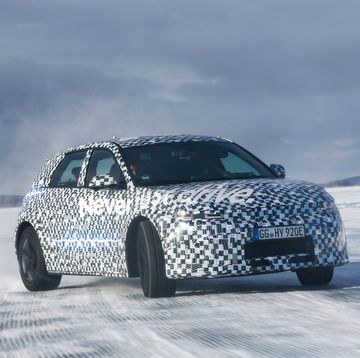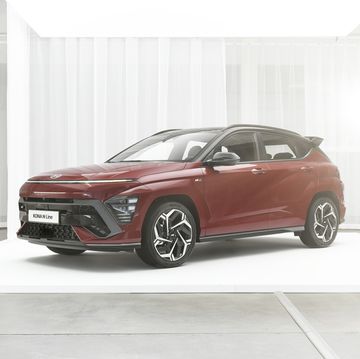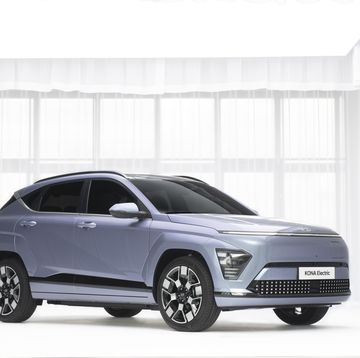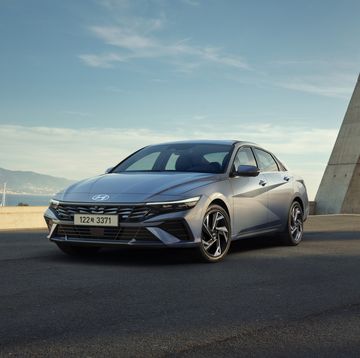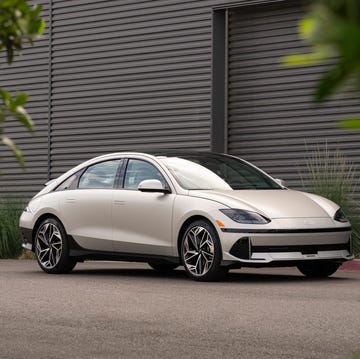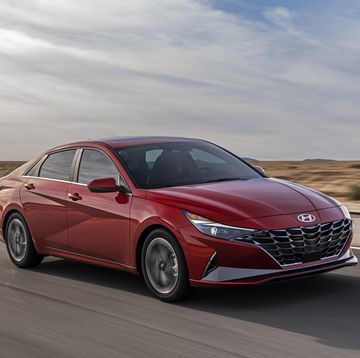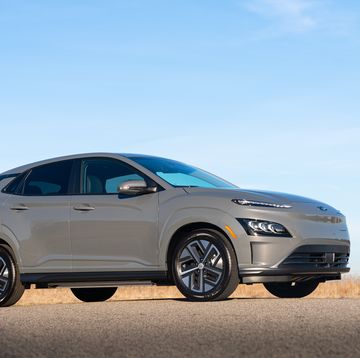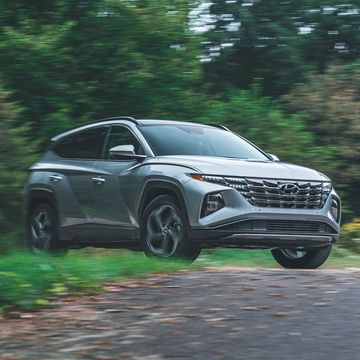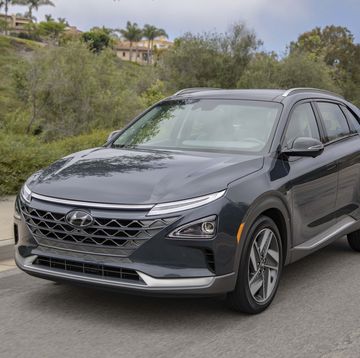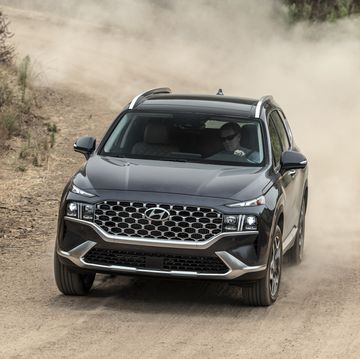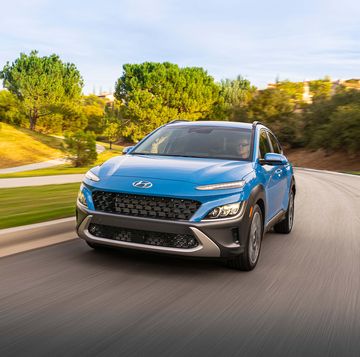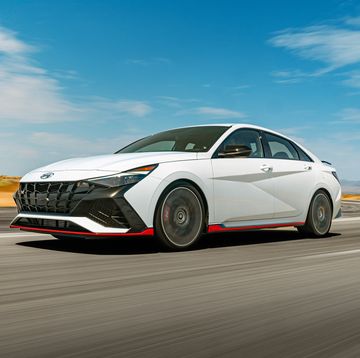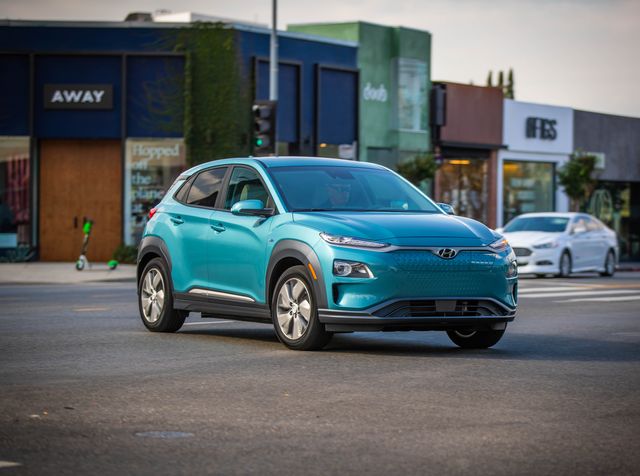
Select a year
- Highs Spunky driving dynamics, usable real-world driving range, generous warranty coverage.
- Lows Tight rear-seat space, all-wheel drive not available, reduced range in cold temperatures.
- Verdict Competitive electric-car attributes in an SUV form make the Kona Electric one of our favorite EVs.
Overview
Its long driving range and spunky driving personality make the 2020 Hyundai Kona Electric one of the best electric vehicles on sale today. It shares its basic structure with the gasoline-powered Kona SUV, but wears a unique front bumper, grille, and special wheels that all look cool and also help reduce aerodynamic drag. The Kona Electric goes head-to-head with other mass-market EVs such as the Chevrolet Bolt EV, entry-level models of the Tesla Model 3, and the Kia Niro EV, but we think it's the best value among its rivals. Hyundai claims a driving range of up to 258 miles per charge and the Kona Electric can recharge its battery fairly quickly on a 240-volt outlet or even quicker using a DC fast-charging station.
What's New for 2020?
Hyundai has made only minor changes to the Kona Electric for 2020. Limited and Ultimate models now come standard with a battery-warmer system to help improve charging times and preserve driving range in cold weather and Ultimate models get a new 10.3-inch infotainment touchscreen.
Pricing and Which One to Buy
We'd recommend the mid-range Limited. It adds a host of desirable features, including a sunroof, leather upholstery, LED exterior lighting, automatic high-beam headlamps, a wireless smartphone-charging pad, and an auto-dimming rearview mirror. Other than a few dealer-installed accessories, Hyundai doesn't offer any option packages for any of the three Kona Electric models.
EV Motor, Power, and Performance
A 201-hp electric motor drives the front wheels (all-wheel drive isn't offered) and is powered by a 64.0-kWh battery pack. At our test track, the Kona Electric galloped from zero to 60 mph in 6.4 seconds, 0.2 second quicker than the regular Kona. As with the regular Kona, the electric version offers sprightly driving dynamics, which makes it fun to scamper along a twisty two-lane. It doesn't offer sports-car-level thrills, but for a subcompact SUV it's compelling to drive. It also cruises smoothly at highway speeds, and feels substantial and planted thanks to the heavy battery, mounted in the floor and its resulting low center of gravity.
Range, Charging, and Battery Life
Aggressive regenerative braking allows for true one-pedal driving and helps extend the driving range to a claimed 258 miles—1 mile less than the Bolt EV. Pulling the paddles behind the steering wheel allow the driver to adjust the level of regen; we prefer the most aggressive setting. The Kona Electric can be charged on a 110-volt household outlet, but we wouldn't recommend that on a day-to-day basis; a 240-volt outlet is best for home charging and the Kona Electric also can be charged at a DC fast-charging station.
Fuel Economy and Real-World MPGe
The Kona Electric has earned a combined rating of 120 MPGe from the EPA. In our real-world highway fuel-economy testing, though, we recorded just 86 MPGe and 160 miles of driving range. However, this test was conducted on a 2019 model in December in our home state of Michigan, where temperatures can frequently register below freezing in the winter. We also tested a Bolt EV in similarly frigid weather and it delivered 140 miles of driving range—far below its EPA-rated number of 238 miles. For 2020, Hyundai has made a battery-warming system standard on Limited and Ultimate models to improve its cold-weather efficiency.
Interior, Comfort, and Cargo
The Kona Electric's cabin is much the same as the one found inside its gas-powered counterpart: It's made from quality materials, is comfortable, and rich with features. The rear seat and cargo area are tight, even by subcompact-crossover standards, but since the Kona was designed from the outset to accommodate a battery pack, there's no less room inside the Electric than the standard model. The cargo area is identical to the regular Kona, too; we fit five carry-on suitcases inside with the rear seats in place and a total of 15 with the seats folded.
Infotainment and Connectivity
All models come with a touchscreen infotainment system featuring Apple CarPlay and Android Auto capability; base SEL models come with a 7.0-inch touchscreen, while upgrading to the Limited adds an 8.0-inch display. The only way to get navigation is to go for the fully loaded Ultimate model, but doing so also adds a large 10.3-inch touchscreen. A six-speaker audio system is standard, while the Limited and Ultimate models both come with an eight-speaker Infinity audio system that sounds much richer.
Safety and Driver-Assistance Features
While the regular Hyundai Kona performed well in the crash tests administered by the National Highway Traffic Safety Administration (NHTSA) and the Insurance Institute for Highway Safety (IIHS), the Kona Electric has not been tested. Blind-spot monitoring and automated emergency braking are standard across the range but adaptive cruise control and pedestrian-detection technology are only offered on the top-spec Ultimate model. Key safety features include:
- Standard automated emergency braking with forward-collision warning
- Standard lane-departure warning with lane-keeping assist
- Available adaptive cruise control and pedestrian detection
Warranty and Maintenance Coverage
Hyundai's warranty coverage is legendary at this point, and now it's even better because of the recent addition of a three-year/36,000-mile complimentary scheduled maintenance plan. The Kona Electric (and all other electric-only vehicles) has no oil or spark plugs to change, so the complimentary scheduled maintenance includes tire rotation, cabin air-filter changes, and a variety of different system inspections. Rival EVs such as the Bolt EV or the Model 3 can't touch the Hyundai's standard warranty offerings. The Kia Niro EV offers similar warranty coverage but no complimentary scheduled maintenance.
- Limited warranty covers 5 years or 60,000 miles
- Powertrain warranty covers 10 years or 100,000 miles
- Battery warranty covers 10 years or 100,000 miles
- Complimentary maintenance is covered for 3 years or 36,000 miles
